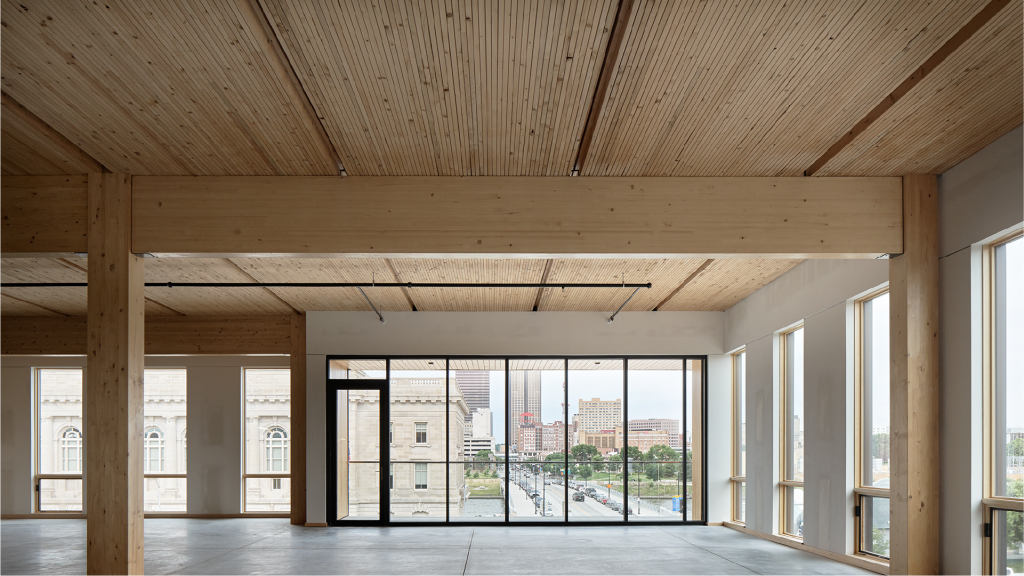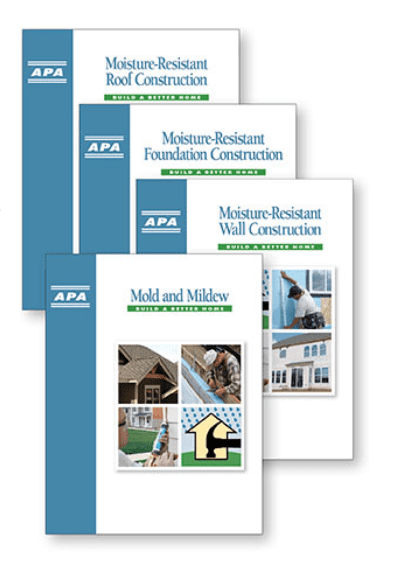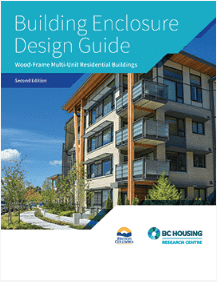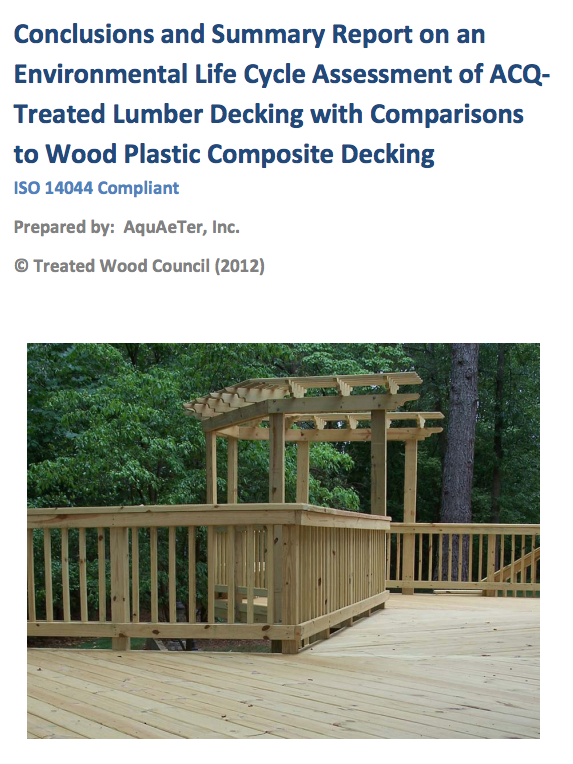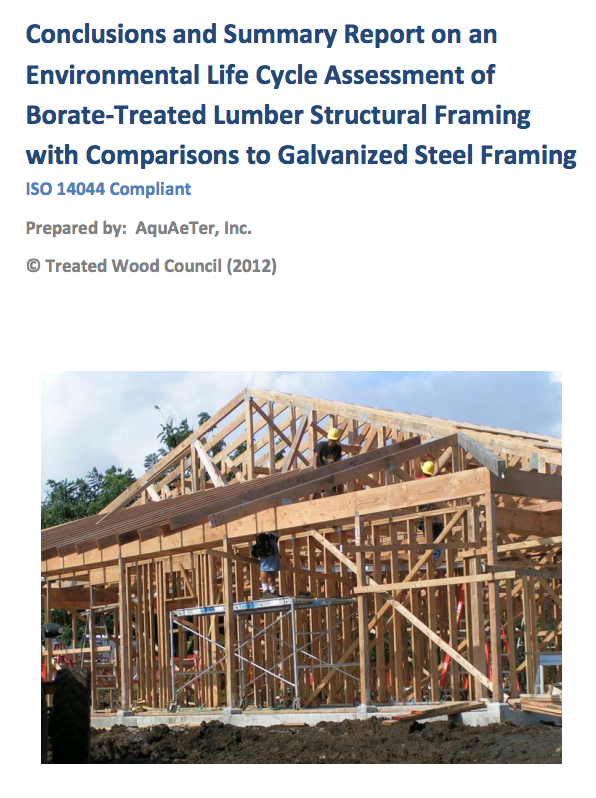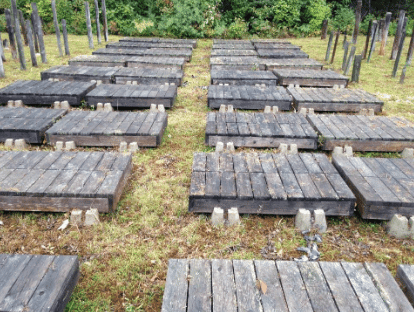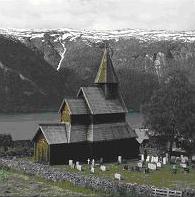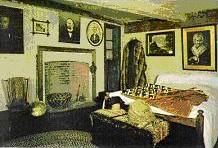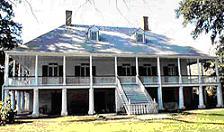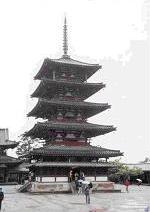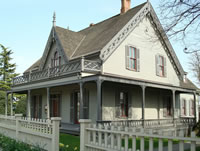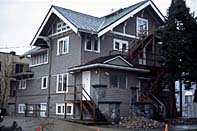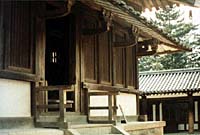Links on Durability of Wood Products
Content
On-Line Information on Wood Design and Durability Information On Treated Wood
Information On Termites and Other Pests Information on Mould / Mold
Other Web Sites of Interest Books On Wood Design
ON-LINE INFORMATION ON WOOD DESIGN AND DURABILITY
Canadian Wood Council
Ottawa, Ontario, Canada
The Canadian Wood Council (CWC) is the national association representing Canadian manufacturers of wood products used in construction. CWC participates in building codes and standards committees relating to structural performance, fire safety and durability to ensure proper use of wood products. Designers, builders and building officials address their questions on the design and use of wood products and building systems to CWC’s technical staff, and CWC publishes a large array of manuals, brochures and electronic tools to provide guidance and resource material.
Web site: https://cwc.ca/
Helpdesk: (800) 463-5091
General: (613) 747-5544
Offers: Design handbooks, software, seminars, fact sheets, links and help. Almost everything is available on-line; some books need to be ordered. Information generally aimed at architects and engineers.
Canada Mortgage and Housing Corporation
Ottawa, Ontario, Canada
As Canada’s national housing agency, provides a wide range of services including leading-edge research. CMHC is Canada’s largest publisher of housing information and has Canada’s most comprehensive selection of information about homes and housing.
Web site: http://www.cmhc-schl.gc.ca/en/index.cfm
General calls, in Canada: (800) 668-2642
General calls, from outside Canada: (613) 748-2003
Offers: Best practice guidelines and other publications. Information aimed at the general public as well as designers and builders. Publications must be ordered, either by phone or on-line. On the web site, go to “order desk” to browse catalog and/or purchase on-line. See sub-sections on Design and Construction, Renovation, Healthy Housing and Multi-unit Design for titles of interest. Recommended: “Best Practice Guide, Wood Frame Envelopes in the Coastal Climate of British Columbia” which will be found at Order Desk/Multi-unit Design. CMHC also publishes a two-volume set “Building Envelope Rehabilitation: Consultant Guide and Owner/Property Manager Guide” which provides help in assessing and fixing moisture-related damage in occupied buildings. CMHC’s web site additionally provides quite a bit of information on-line, in brief web pages – from the home page, go to “browse by topic” and click on “building, renovating and maintaining.”
University of Massachusetts, Building Materials and Wood Technology
Amherst, Massachusetts, USA
This web site for a university program primarily contains curriculum information, however click “publications” for plain-language information on many construction topics of general interest.
Web site: http://www.umass.edu/bmatwt/
Offers: Dozens of on-line articles aimed at the general public as well as designers and builders.
US Forest Products Laboratory
Madison, Wisconsin, USA
Established in 1910 by the U.S. Department of Agriculture Forest Service, the Forest Products Laboratory (FPL) serves the public as the U.S.’s leading wood research institute. FPL is recognized both nationally and internationally as an unbiased technical authority on wood science and use. Today, more than 250 scientists and support staff conduct research on expanded and diverse aspects of wood use. Research concentrates on pulp and paper products, housing and structural uses of wood, wood preservation, wood and fungi identification, and finishing and restoration of wood products.
Web site: http://www.fpl.fs.fed.us/
Phone: 608-231-9200
Offers: In addition to information about the research programs and technical research reports, the FPL web site also offers many on-line documents targeted for the general public. From the home page, click “FAQs” for access to the on-line (but somewhat technical) “Wood Handbook.” Click “Techlines” for a series of fact sheets that range from consumer-friendly to fairly technical. FPL is known as a source of information on wood finishes – click “Painting and Finishing Fact Sheets.” Almost all other FPL documents are also available on line. To find reports, papers or other documents, click “Search” (under Publications) on the home page and enter the topic of interest.
American Wood Council (AWC)
Washington, DC, USA
AWC is the wood products division of the American Forest & Paper Association (AF&PA). AWC’s mission is to increase the use of wood by assuring the broad regulatory acceptance of wood products, developing design tools and guidelines for wood construction, and influencing the development of public policies affecting the use of wood products.
Web site: http://www.awc.org/
Helpdesk: (202) 463-4713
General: (202) 463-2766
Offers: Has a very useful helpdesk for any questions regarding the use of wood and its products in building construction. Many publications are available online. Offer technical information regarding U.S. Codes and standards as well as a section on “Mold and Moisture in Homes.”
APA — The Engineered Wood Association
Tacoma, Washington, USA
A membership organization representing 75 percent of the structural wood panel products manufactured in North America, plus a host of engineered products that include glued laminated timber (glulam), composite panels, wood I-joists, and laminated veneer lumber. Very active in research and technology transfer.
Web site: http://www.apawood.org/
Tel: (253) 565-6600
Email: help@apawood.org
Offers: Hundreds of reports, fact sheets and other publications, generally geared for design and construction professionals. Many are available on-line; others can be purchased for a modest fee – search by topic area under “Publications.” Alternatively, browse the site by topic area for a wide range of information, on both specific engineered wood products (click “Products”) as well as general wood framing (click “Applications”). These topic-area pages are nicely cross-referenced to related publications. For specific durability-related information, click “Build a better home” in the left side menu. The web site also has FAQs and a “help desk.” Send questions by e-mail, or phone and ask for the help desk.
National Association of Home Builders Research Center
Upper Marlboro, Maryland, USA
Founded in 1964, the NAHB Research Center is a separately incorporated, wholly-owned, not-for-profit subsidiary of the U.S. National Association of Home Builders (NAHB), a membership organization of builders, manufacturers, and other housing industry professionals. Research spans a broad spectrum including design and construction of homes, land use, the environment, affordable and sustainable housing, and special needs housing. Technology transfer to builders and others is largely via “Toolbase,” a web site supplying information on building products, materials, new technologies, business management, and housing systems.
Web site: http://www.nahbrc.org/
Tel: (301) 249-4000
Toll Free in the US: (800) 638-8556
Toolbase help hotline: (800) 898-2842 (US only)
Offers: The Research Center web site offers 100 publication titles available for purchase, not available on- line. However, click on “Toolbase” and jump to a content-heavy web site with fact sheets, news and more all available on-line. Also has an “ask the expert” feature, by phone or e-mail.
Homeowner Protection Office
Vancouver, British Columbia, Canada
The Homeowner Protection Office (HPO) is a British Columbia Crown corporation formed in 1998 as a response to concerns about the quality of condominium construction in BC. Its purpose is to help strengthen consumer protection for buyers of new homes and improve the quality of residential construction in the province. The HPO is responsible for residential builder licensing, regulating mandatory third-party home warranty insurance, administering a no-interest repair loan program and tax relief grant for owners of leaky homes, and a research and education function designed to benefit the residential construction industry and consumers
Web site: http://www.hpo.bc.ca/
Tel: (800) 407-7757 (BC only)
Offers: This web site is full of on-line information specific to builder and consumer issues in BC. However, click on FAQs or Publications for access to several on-line documents of general interest to anyone involved in moisture-related damage repair.
National Research Council / Institute for Research in Construction (IRC)
Ottawa, Ontario, Canada
Established in 1947, IRC provides research, building code development, and materials evaluation services within Canada’s national laboratory. IRC’s Building Envelope and Structure program develops and applies technologies for design, construction and operation of durable, energy-efficient, and cost-effective building systems, in both new construction and repair or renovation, for all types of buildings. An interesting recent project is the Consortium for Moisture Management for Exterior Walls (MEWS), a research effort addressing some of the technical fundamentals behind moisture performance of building envelopes and funded by a partnership of industry groups. Results, when available, can be viewed on the web site.
Web site: http://www.nrc.ca/irc/bes/index.html
Offers: Click “publications” for access to a rich collection of on-line information, including nearly all of the famous (and not necessarily outdated) Canadian Building Digest articles published between 1960 and 1990. Also available on-line is IRC’s quarterly newsletter, staff articles from construction journals, and more. Some publications are abstracted only and can be ordered.
INFORMATION ON TREATED WOOD
American Wood Preservers’ Association
The American Wood-Preservers’ Association (AWPA) is an international, non-profit technical organization founded in 1904 to provide a common forum for the exchange of information for all segments of the wood preservation industry. AWPA provides standards development and a link for technical exchange between industry, researchers, and users of treated wood. As the principal standards writing organization for the wood treating industry in the United States, AWPA has significant influence internationally as well. AWPA Standards are written to insure that treated wood products perform satisfactorily for their intended uses. The Standards are recognized and used by customers worldwide, who purchase and use treated wood for applications in the building products, electrical, marine, railroad transportation, and road construction industries. The Standards, as well as technical papers contained in proceedings from annual meetings, are available for order through the web site, but may not be viewed on-line. However, there are several fact sheets and FAQs available on-line. Most of AWPA’s information is targeted to the wood treatment industry, but some material may be of interest to treated wood users.
Web site: http://www.awpa.com/
The Wood Preservation Science Council
Cambridge, Massachusetts, USA
Web site provides a thorough collection of on-line research documents (prepared by a variety of agencies) on the subject of health and environmental impacts of CCA-treated wood.
Web site: http://www.woodpreservativescience.org/facts.shtml
Wood Preservation Canada
Ottawa, Ontario, Canada
Wood Preservation Canada is a non-profit industry association comprising members from across Canada. Operating under a Federal Charter, the Institute serves as a forum for those involved with the wood preservation industry, from research to production, marketing and protection of the environment. WPC members cooperate with government departments and other agencies in preparing standards for the industry, and in developing guidelines for the design and operation of wood preservation facilities. It works with Canadian university testing laboratories, faculties and independent research organizations concerned with the development of treated wood. The web site offers many on-line fact sheets and FAQs targeted at users of treated wood. Also available on-line is a table of CSA O80 standards by commodity.
Web site: http://www.woodpreservation.ca/
International Research Group on Wood Preservation
The International Research Group on Wood Preservation (IRG) was launched as an independent research group in January 1969, with the Secretariat currently located in Sweden. Today the Group has more than 300 members from 49 countries around the world. IRG provides a forum and networking system for wood preservation researchers, publishes more than 100 documents every year, arranges conferences and so forth. The web site does not offer any publications on line, however titles can be browsed and ordered through the site. Information offered is highly technical.
Web site: http://www.irg-wp.com/
Western Wood Preservers Institute
Vancouver, Washington, USA
Established in 1950 and representing the interest of the pressure treating wood products industry throughout western North America, WWPI provides a range of information on its web site for users of treated wood.
Web site: http://www.wwpinstitute.org/
INFORMATION ON TERMITES AND OTHER PESTS
Louisiana State University Agricultural Center
Web site: http://www.lsuagcenter.com/en/environment/insects/Termites/
University of Toronto, Urban Entomology Group
Web site offers information on biology and control of termites
Web site: http://www.utoronto.ca/forest/termite/termite.htm
University of Hawaii
Web site: www2.ctahr.hawaii.edu/oc/freepubs/index.asp
Click on “Household and Structural Pests” for fact sheets on termites and on termite barrier technologies.
University of Nebraska, Lincoln
Web site: http://www.ianr.unl.edu/ Search for “termite”.
Australian Pest Controllers Association
Web site: http://www.termite.com/
Very thorough information for builders and homeowners – useful outside Australia as well.
Further reading (termites):
Possibly the most comprehensive guidance on termite control is provided by two Australian standards:
- Australian Standard AS 3660.1-1995 Protection of buildings from subterranean termites. Part 1 New buildings. Standards Australia, Homebush,
- Australian Standard AS 3660-1993- Protection of buildings from subterranean termites. – Prevention, detection and treatment of Standards Australia, Homebush, NSW.
- You can purchase (but not view) these documents at this web site: http://www.standards.com.au/ – type “termite” in the search
INFORMATION ON MOLD
Mold, Housing and Wood
Written by an industrial hygienist and a wood mycologist in 2002. This 15-page paper is clear and well- referenced. Available on-line: http://www.wwpa.org/lumberandmold.htm
The Condominium Home Owners Guide to Mold
A small booklet published by Canada Mortgage and Housing Corporation, providing useful and simple tips on prevention and cleanup. Available by phone – see CMHC listing at top of page.
Clean-up Procedures for Mold in Houses
Booklet published in 1993 by Canada Mortgage and Housing Corporation. Available from CMHC web site (Order Desk/Healthy Housing). See CMHC listing at top of page.
Mold in Housing: An Information Kit for First Nations Communities
Authored by Canada Mortgage and Housing Corporation, Health Canada and Indian and Northern Affairs Canada. Useful for anyone, not just First Nations/Native Americans. Addresses what to do about mold, in layperson’s language. Available only by phone from CMHC – see listing at top of page.
Fungal Contamination in Public Buildings: A Guide to Recognition and Management
Published by Health Canada in 1995, this 88-page, thorough and scientific report provides a protocol for investigating buildings with suspected fungal problems affecting human health. Available on-line at http://www.hc-sc.gc.ca/ewh-semt/alt_formats/hecs-sesc/pdf/pubs/air/fungal-fongique/fungal-fongique_e.pdf
Guidelines on Assessment and Remediation of Fungi in Indoor Environments Published in 2000 by the New York City Department of Health, Bureau of Environmental and Occupational Disease Epidemiology. Covers health issues and provides a protocol for assessment and remediation. Similar in scientific approach to the Health Canada document, however much shorter. Available on-line at http://home2.nyc.gov/html/doh/html/epi/moldrpt1.shtml
Moulds: Isolation, Cultivation, Identification
An on-line book, 1997, by David Malloch, Department of Botany, University of Toronto:
http://www.botany.utoronto.ca/ResearchLabs/MallochLab/Malloch/Moulds/Moulds.html
Mold Resources
The United States Environmental Protection Agency web site has comprehensive on-line information and many links on molds, cleanup and health: http://www.epa.gov/iaq/molds/index.html
Report of the Microbial Growth Task Force
Published by the American Industrial Hygiene Association, 66 pages, 2001, covers procedures for remediation of molds in buildings. Available on-line at: http://www.aiha.org/content/accessinfo/consumer/factsaboutmold.htm
OTHER WEB SITES OF INTEREST
University of Waterloo, Building Engineering Group
Waterloo, Ontario, Canada
The Building Engineering Group (BEG) is a multi-disciplinary group which undertakes research, development and demonstration (R,D & D) for the building industry. BEG is a non-profit, non-proprietary organization operating within the Civil Engineering Department. Operates an outdoor test facility for assessment of building envelope performance, the BEG hut.
Web site: http://www.civil.uwaterloo.ca/beg
Centre for Building Studies, Concordia University
Montreal, Quebec, Canada
The Centre is a research group within the Department of Building, Civil & Environmental Engineering. Research areas include building envelope performance, indoor environment, wind effects and more. The Centre has many advanced facilities for research – click on “Laboratories” to learn more.
Web site: http://www.bcee.concordia.ca/index.php/Centre_for_Building_Studiesindex.htm
National Building Envelope Council
Ottawa, Ontario, Canada
A forum for Canadian design professionals to share information and jointly pursue excellence in design, construction and performance of envelopes. Arranges annual conferences. Local chapters offer regular meetings, lectures, newsletters and so forth – click “Regional BECs”
Web site: http://www.nbec.net/
BOOKS ON WOOD DESIGN
Best Practice Guide, Wood Frame Envelopes in the Coastal Climate of British Columbia. Canada Mortgage and Housing Corporation, 1998. 211p, detailed drawings and 3D PowerPoint files. This is a comprehensive design guide. Also includes some background information on wood decay. Available from CMHC – see listing at top of page.
Building Envelope Rehabilitation: Consultant Guide and Owner/Property Manager Guide. Canada Mortgage and Housing Corporation, 2001. A two-volume set providing help in assessment and remediation of moisture-related damage in occupied buildings. Available from CMHC – see listing at top of page.
Builder’s Guides. J. Lstiburek, 1997, Building Science Corporation, Westford, MA, 303p. http://www.buildingscience.com/, 978-589-5100. Comprehensive guides available in four versions (one each addressing four different climate zones that cover all of North America) with detailed drawings covering design principles, foundations, framing, HVAC, plumbing, electrical, drywall and painting. Building science translated for the builder.
CSA S478-95 Guideline on Durability in Buildings. 1995, 93p, Canadian Standards Association, Etobicoke, ON. Advice on incorporating requirements for durability into the design, operation and maintenance provisions for buildings and their components. Overview of deterioration agents and life expectancies for various components.
Design of Wood Structures for Permanence. Anon., 1988, 17p, American Forest and Paper Association, Washington, DC. A very brief overview of general recommendations on good construction practice.
Available through the web site of the American Wood Council (see above, under “wood design and durability”).
Evaluation, Maintenance and Upgrading of Wood Structures, A guide and Commentary. Subcommittee of American Society of Civil Engineers, 1982, 428p, American Society of Civil Engineers, New York, NY. A somewhat dated guide to the technical aspects of inspection, evaluation, reinforcement, repair and rehabilitation of timber structures. Application of lessons learned to design and maintenance of new structures.
Guide to the Inspection of Existing Homes for Wood-Inhabiting Fungi and Insects. M.P. Levy, 1979, 104p, US Department of Housing and Urban Development. A well illustrated booklet which would be invaluable to anyone inspecting buildings for decay. Not as comprehensive as the BRE publication (see “Recognizing Wood Rot ” below), but more relevant to North American conditions.
Introduction to Wood Building Technology. Canadian Wood Council, 1997, 430p, Ottawa, ON. A technical book on wood-frame construction, it covers materials and properties, thermal insulation, fire protection, construction details, sound control and inspection and repair. Available from CWC – see listing at top of page.
Moisture Control Handbook: New low-rise, Residential Construction. J. Lstiburek and J. Carmody, 1991, 247p, US Department of Commerce, National Technical Information Service, Springfield VA. A guide for heating, cooling and mixed climates. How walls get wet through vapour diffusion, air leakage, condensation, and water leakage. Moisture control strategies. Building science explained.
National Building Code of Canada. National Research Council, 1995, 571p, Ottawa, ON. Minimum requirements to satisfy consumer health, safety and accessibility requirements of buildings. Protection of property is not considered a root objective of the building code consequently references to durability requirements are extremely limited. Very little guidance on how to implement the requirements of the code in terms of moisture control, compared to for example, fire control.
Recognising Wood Rot and Insect Damage in Buildings. A.F. Bravery, R.W. Berry, J.K. Carey and D.E. Cooper, Building Research Establishment, Garston, UK, 1992, 120p. A comprehensive and well-illustrated guide to distinguishing different types of wood-destroying organisms. More relevant to the UK and European building practice and organisms than to North America. Available at http://web.archive.org/web/20051104025920/http://www.bre.co.uk/ (click “bookshop”).
Selection and Use of Preservative Treated Wood. D.L. Cassens, W.C. Feist, B.R. Johnson and R.C. DeGroot, 1995, Forest Products Society, Madison, WI. An excellent guidebook for those contemplating using treated wood in a project.
Wood as a Building Material. W. Wilcox, E. Botsai, and H. Kubler, John Wiley & Sons Inc., 1991. 215 p, index, bibliography, many illustrations. Clear and concise, intended to be readable by building designers. Covers the properties and structure of wood, the relationship between wood and water, wood products, thermal properties, fire performance, decay and its prevention, wood finishing, design guidelines and wood identification.
Wood Protection Guidelines: Protecting Wood From Decay Fungi and Termites. Anon., 1993, Wood Protection Council, National Institute of Building Sciences. A very useful guidebook on controlling the conditions that favour attack by wood-destroying organisms.
Wood Reference Handbook, A Guide to the Architectural Use of Wood in Building Construction. Canadian Wood Council, 2000, 562p, Ottawa, ON. A wealth of basic information on wood characteristics, wood product properties, connections, structural wood systems, building completion, wood finishes, and fire safety. Minimal information on preservative treatment compared to fire control. Available from the Canadian Wood Council – see listing at top of page.
Finishes for Exterior Wood. R. Williams, U.S. Forest Products Laboratory, 1996. Excellent booklet available at low cost, by phone only – see the FPL listing near top of page. Also see FPL web site for on-line fact sheets on finishes.


